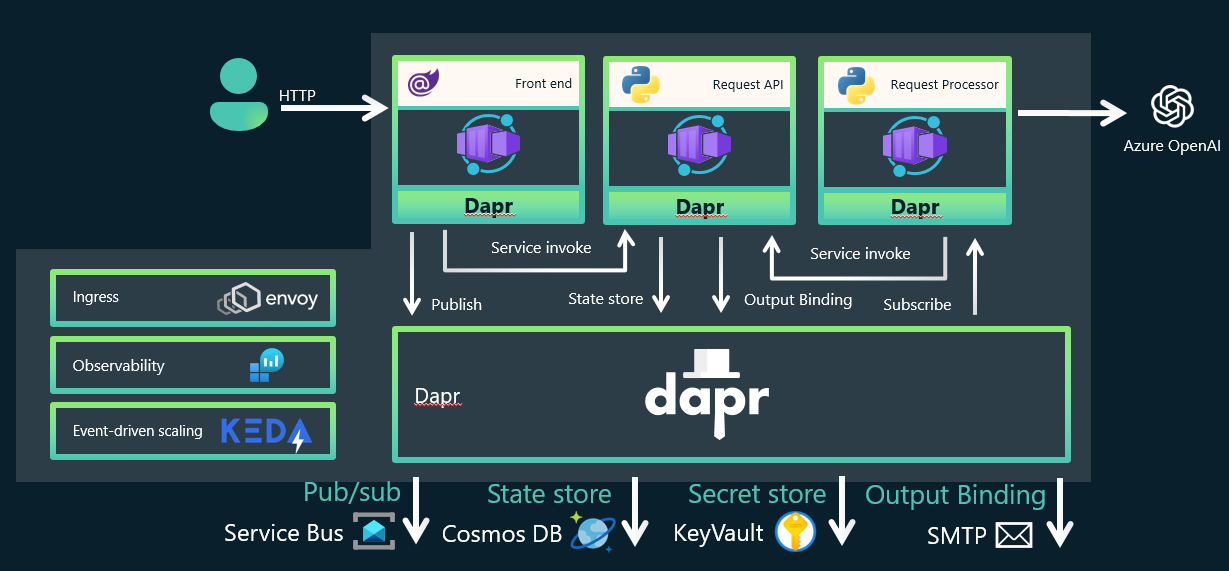The European Cloud Summit took place in Wiesbaden from May 14th to 16th. 3,000 participants and over 200 speakers met in the RheinMain CongressCenter. The sessions at the Cloud Summit were structured into 5 different tracks: Business and Strategy, Open AI, Azure Security, Azure Infrastructure and Azure Development. I focused primarily on the development sessions and would like to highlight the following sessions:
Serverless Actor Model with Durable Functions
The idea of the Actor Model is based on the fact that each software component represents an actor, which has its own queue, memory and state. The actors communicate via messages. When receiving a message, an actor can change its internal state, send asynchronous messages itself or create new actors. The actor idea is closely linked to the idea of microservices.
After Massimo Bonanni explained the basics, he introduced the new durable function type entity. This saves its state in table storage and supports both asynchronous and synchronous calls. However, the functions also have some restrictions, for example no overloads for operators are possible and no operators without arguments.
He then showed an example implementation using Entity Functions. An application for renting cars at various stations was implemented. The code can be found in his GitHub repository ServerlessCarRent.

Protecting sensitive data in Azure SQL databases
The session was conducted by Ivan Vagunin. He showed how easily Azure SQL data can be stolen at transit, at rest and at process. He also shows how Transparent data encryption (TDE) can be used to protect data at rest. However, TDE should always be activated and now also supports the use of CMK. Always Encrypt with secure enclaves protects the data at processing. There are different configurations, for example with and without Secure Enclave and in the variants Deterministic and Randomized. The specific configuration can affect comparison operators and the number of round trips to the server required.

Azure Container Apps and Dapr
Ralf Richter had implemented a sample application that analyzes websites. He separated the application in 3 microservices and hosted them in Azure Container Apps. He uses Dapr to track communication channels and he showed how easily the bindings worked. The bindings allowed him to integrate OpenAI and an email service with extremely little configuration. He also reported from practice, where he uses Azure Container Apps and Dapr for large applications with more than 300,000 requests per second.

Unleashing the Power of Microsoft Semantic Kernel
At the beginning, Daniel Costea gave a small overview of the Semantic Kernel and showed the differences between Native Functions and Semantic Functions and how they are organized into plugins. He also compared the Handlebars Planner and the FunctionCallingStepwise Planner.
He then showed all the explained features using an example implementation. There was a remote-controlled car that only provided a few movements (e.g. forward, turning left…). He then gave the Semantic Kernel complex tasks, such as driving around an obstacle or dancing. The AI then uses the Semantic Kernel to decide what the best movements are and outputs them.

Conclusion
There were many exciting lectures and networking opportunities, the conference is a clear recommendation. Unfortunately, the sessions have no levels, so some sessions were very technical and others were very superficial.

Schreibe einen Kommentar